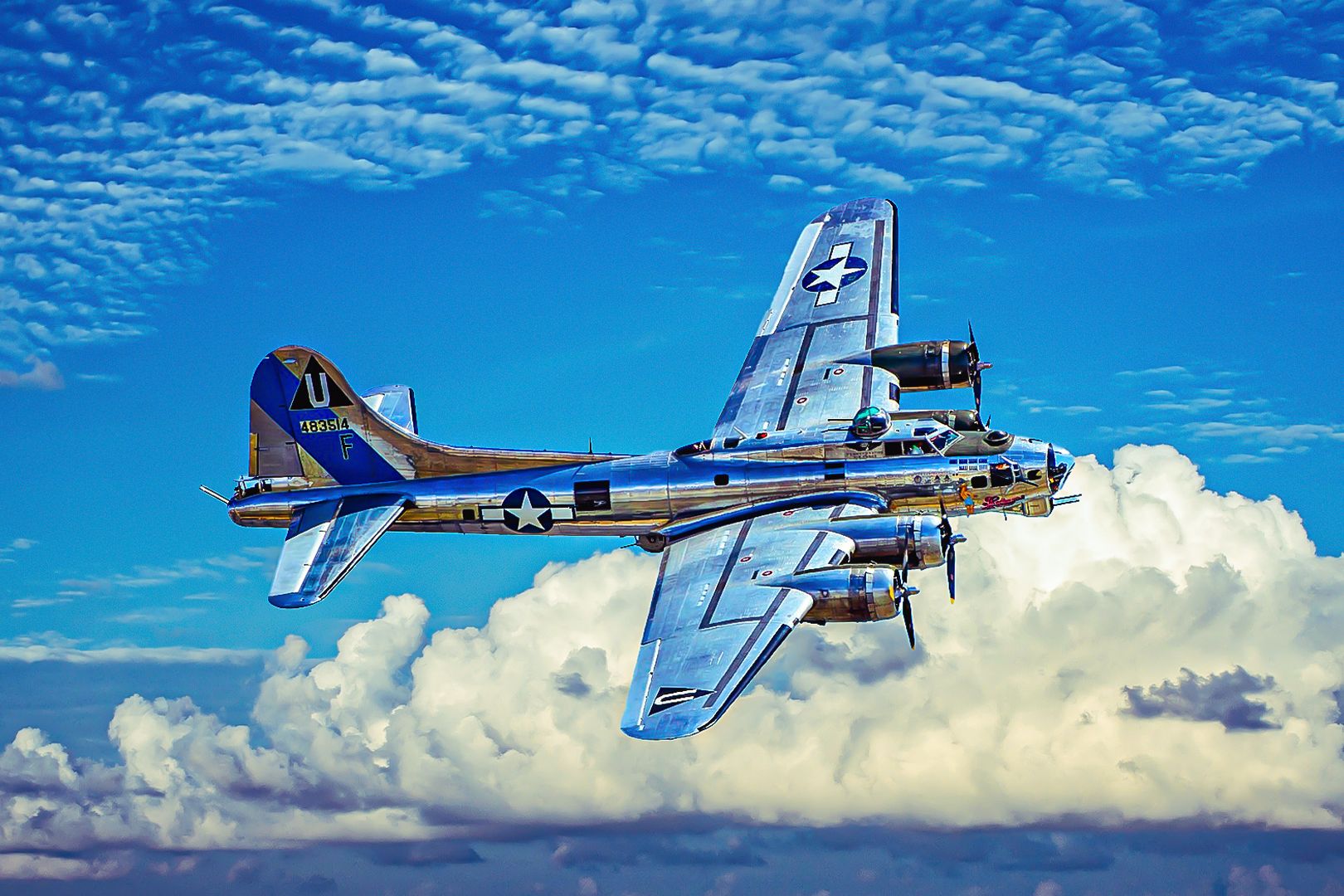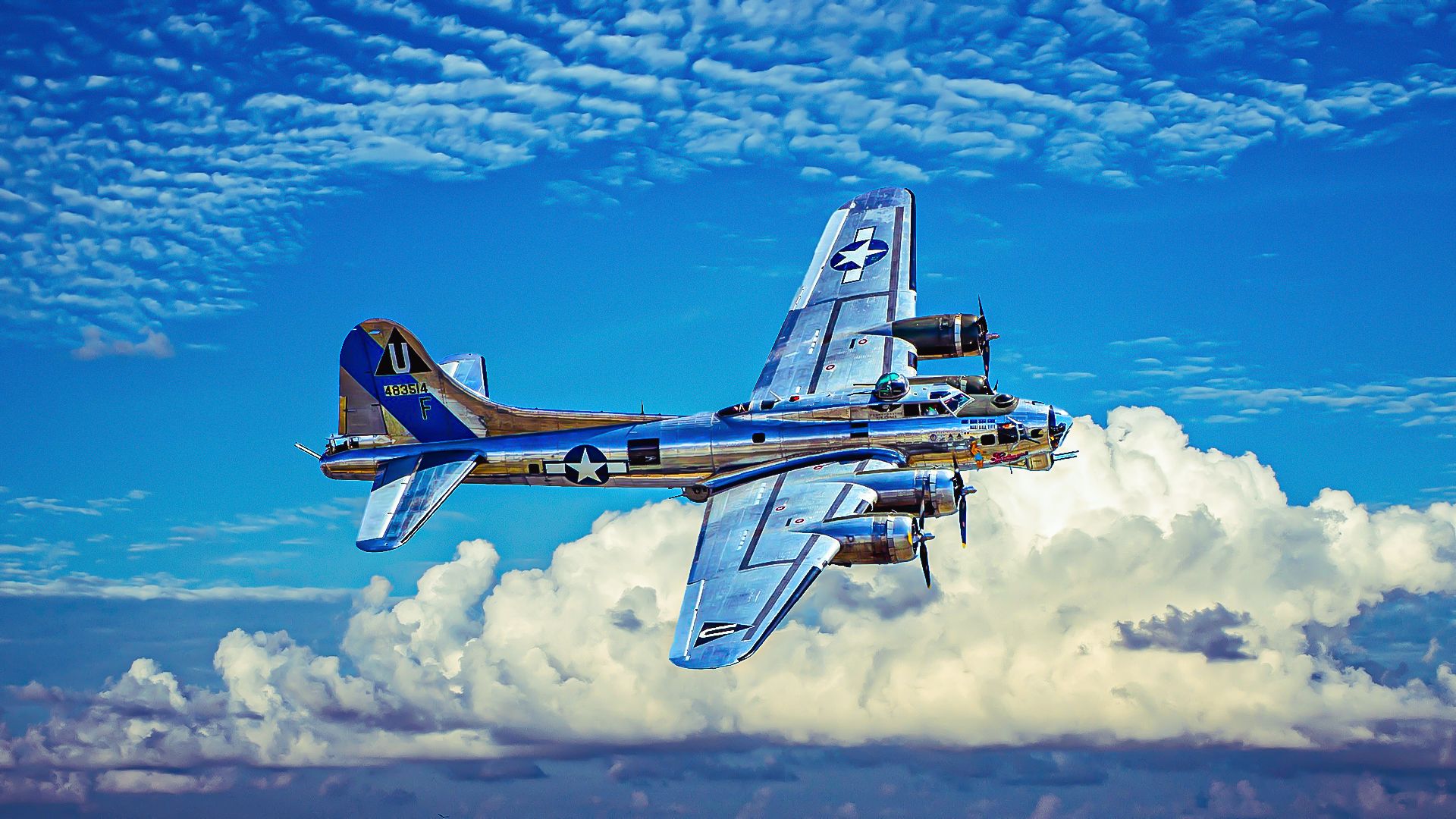
Though it wasn’t the bomber that actually ended the Second World War (that distinction and honor belongs to another Boeing product, the B-29 Superfortress), the Boeing B-17 Flying Fortress was to bombers what the North American P-51D Mustang was to fighters: the iconic symbol of American airpower during WWII.
It can be argued that the “Flying Fort” was the most impactful American bomber in the European Theater of WWII. Simple Flying now examines the B-17’s impact on the European air war.
For a superbly detailed account of the B-17’s history, read the book Flying Forts: The B-17 in World War II by the late, great (and incredibly prolific) aviation author Martin Caidin (September 14, 1927 – March 24, 1997).
Was The B-17 Outdated Before The US Entered WWII?
Sam McGowan writes in a June 2020 article for Warfare History Network that the B-17 was “already outdated by the time the first Japanese bomb fell on Pearl Harbor.” He continues:
“its initial wartime introduction produced results so dismal that the British, who were the first to test it in combat, decided against the Boeing bomber and instead opted for the new Consolidated airplane that had been designed to replace it as their four-engine bomber import.”
That “new Consolidated airplane” was the Consolidated B-24 Liberator, the comparatively unsung heavy bomber of the American war effort in WWII. In several ways, the Liberator was a technically superior warplane to the Flying Fortress, as the Liberator had a longer range, greater speed, and a bigger payload than its Boeing counterpart. In addition, the B-24 was the most produced combat aircraft in history, with 18,482 airframes built.
Another bomber that packed a bigger bomb load than the B-17 was the Avro Lancaster of Great Britain’s Royal Air Force (RAF): it wielded the “Grand Slam” bomb, which in several engagements dropped the mighty “Grand Slam,” a 22,000 lb (9,979 kg) earthquake bomb.
However, the flip side to the B-17 vs. B-24 argument was that the Liberator had a reputation for being more difficult to fly and taxi. What’s more, it lacked the Flying Fortress’s ability to absorb brutal punishment and still return home with at least some of its crewmembers alive.
“Yes, the lordly Flying Fortress and the Liberator too
Once wrote the doom of Germany with contrails in the blue
But now the skies are empty and our planes are wet with dew
And we can’t fly for hell!
(CHORUS/REFRAIN)
Gloryflying regulations
Have them, read at every station
Crucify the man who breaks one
The Air Force is shot to hell!”
–“Air Corps Lament” (0:51 mark) as sung by Dick Jonas, Lt. Col., USAF (Ret.)
By the numbers: measuring the B-17’s impact in Europe
In terms of sheer bomb tonnage dropped, the B-17 was indeed the most impactful warbird of the Western European air campaign. It dropped more bombs – 640,000 tons dropped on Nazi Germany and its occupied territories alone – than any other aircraft during WWII.
The Flying Fortress was no slouch in the production numbers department either: with a total of 12,731 airframes produced, it was the third-most produced bomber of all time, behind the B-24 and the Luftwaffe’s Junkers Ju-88.
The single most famous B-17 was the “Memphis Belle,” a B-17E model that was the first heavy bomber to return to the U.S. after flying 25 missions over Europe.
B-17 crews ended up tallying 17 Medals of Honor.
Riding on the B-17
I took the ride back in August 2020 as a 45th birthday present to myself. The particular Flying Fort in question was a B-17G (the final variant with the chin gun turret added for additional protection from frontal attacks) affectionately named “Sentimental Journey.” It has been lovingly owned and maintained by the Airbase Arizona chapter of CAF since 1978 (though my particular flight actually embarked out of Hagerstown, Maryland).
As the chapter’s info page elaborates:
“Sentimental Journey was originally manufactured and delivered to the U.S. Army Air Forces for war service in 1944 where she flew missions in the Pacific Theater. After the war she flew for training, testing and at-sea rescue missions and was eventually sold for surplus and used as a fire bomber.”
Yes, that’s right, this specimen fought in the Pacific rather than in Europe. However, it was an absolutely unforgettable experience, incomparable to any commercial jet-powered flight I’ve ever experienced! Something must be said about breathing natural air in mid-flight instead of recycled cabin air.

